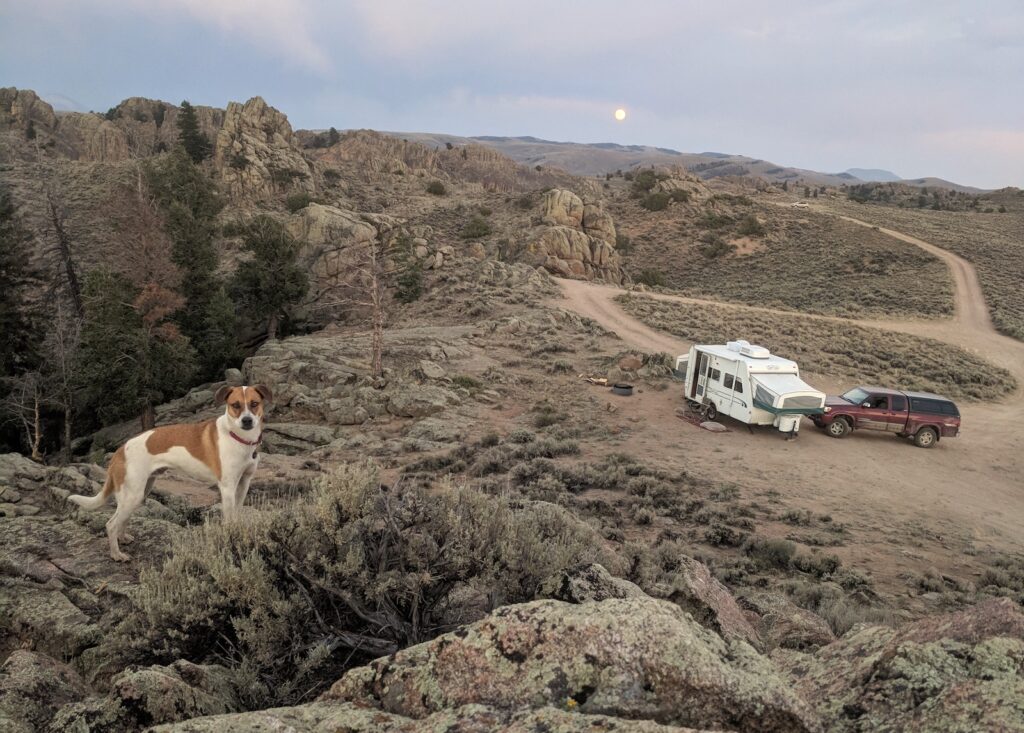
The allure of escaping the hustle and bustle of city life and immersing oneself in the tranquility of nature is undeniable. For some, the idea of can you live on public land and embracing a self-sufficient lifestyle in the wilderness seems like a dream come true. However, the reality is far more complex. While public lands offer breathtaking scenery and opportunities for recreation, establishing permanent residences on them is generally prohibited in the United States.
This article will delve into the intricacies of public land camping laws, differentiating between legal camping and illegal habitation. We’ll explore designated camping areas, dispersed camping regulations, and the potential consequences of violating these rules. By understanding the legal framework surrounding public land use, individuals can make informed decisions and enjoy the outdoors responsibly.
Public Land Camping Laws
Public lands encompass a vast expanse of federally managed areas, including national forests, Bureau of Land Management (BLM) land, and national parks. These lands are held in trust for the benefit of all Americans and are subject to specific regulations to ensure their preservation and sustainable use.
One fundamental principle governing public land use is the prohibition against establishing permanent residences without proper authorization. This means that building structures, setting up long-term campsites, or living on public land as a primary residence is generally illegal.
The rationale behind this restriction is multifaceted. It aims to protect the natural environment from degradation, prevent overcrowding and resource depletion, and maintain the integrity of designated wilderness areas.
Legal Camping vs. Illegal Habitation

The distinction between legal camping and illegal habitation is crucial for understanding public land regulations. Legal camping typically involves temporary stays in designated areas, adhering to specific guidelines and time limits.
Legal Camping Characteristics:
- Designated Campgrounds: Campsites within established campgrounds often offer amenities like restrooms, potable water, and fire rings.
- Permits and Reservations: Many campgrounds require permits or reservations, which can be obtained online or through local ranger stations.
- Time Limits: Legal camping usually has time restrictions, ranging from a few days to a few weeks, depending on the location and regulations.
- Minimal Impact: Campers are expected to practice Leave No Trace principles, minimizing their impact on the environment.
Illegal habitation, on the other hand, involves establishing a permanent or semi-permanent residence on public land without authorization. This often includes building structures, connecting to utilities, and living on the land for extended periods.
Illegal Habitation Characteristics:
- Unauthorized Structures: Building shelters, cabins, or other permanent structures without permission is illegal.
- Extended Stays: Living on public land for months or years without proper authorization constitutes illegal habitation.
- Resource Depletion: Illegal habitation can lead to excessive water use, firewood collection, and waste disposal, harming the environment.
- Safety Concerns: Unpermitted dwellings may lack proper sanitation, electricity, and safety features, posing risks to occupants.
Designated Camping Areas
National forests, BLM land, and state parks often designate specific areas for camping. These designated campgrounds provide amenities and infrastructure to accommodate campers while minimizing environmental impact.
Campground Amenities:
- Restrooms and Showers: Many campgrounds offer flush toilets, showers, and handwashing stations.
- Potable Water: Access to clean drinking water is typically provided at designated water sources.
- Fire Rings: Campfires are often permitted in designated fire rings, which help contain flames and prevent wildfires.
- Picnic Tables and Grills: Campgrounds may provide picnic tables and grills for cooking and dining.
Campground Regulations:
- Reservations: Some campgrounds require reservations, especially during peak seasons.
- Campsite Limits: Campgrounds often have limits on the number of people and vehicles allowed per campsite.
- Quiet Hours: Campgrounds typically have designated quiet hours to minimize noise disturbances.
- Waste Disposal: Proper waste disposal is essential to protect the environment. Campgrounds usually have designated areas for trash and recycling.
Dispersed Camping Regulations

Dispersed camping, also known as primitive camping, allows individuals to camp outside of designated campgrounds on public lands. However, dispersed camping is subject to specific regulations to ensure responsible use and minimize environmental impact.
Dispersed Camping Guidelines:
- Location Restrictions: Dispersed camping is often permitted in national forests and BLM land, but specific areas may be restricted.
- Campsite Size and Duration: Campsites should be small and temporary, typically no larger than 15 feet by 20 feet.
- Fire Safety: Campfires are often permitted in designated fire rings or areas, but they must be completely extinguished before leaving the campsite.
- Leave No Trace: Dispersed campers are expected to follow Leave No Trace principles, packing out all trash and minimizing their impact on the environment.
Consequences of Illegal Habitation
Violating public land camping laws, particularly engaging in illegal habitation, can result in serious consequences.
Legal Penalties:
- Fines: Individuals caught illegally inhabiting public land can face hefty fines, ranging from hundreds to thousands of dollars.
- Imprisonment: In some cases, illegal habitation can lead to jail time, especially if it involves trespassing, vandalism, or other criminal activity.
- Eviction: Authorities have the right to evict individuals living illegally on public land, confiscating their belongings.
Environmental Impacts:
- Habitat Degradation: Illegal habitation can damage sensitive ecosystems, disrupt wildlife populations, and contribute to soil erosion.
- Water Pollution: Improper waste disposal and sewage runoff from illegal dwellings can contaminate water sources.
- Fire Risk: Unpermitted structures and campfires can increase the risk of wildfires, posing a threat to human safety and natural resources.
Conclusion
While the idea of can you live on public land may seem appealing, it’s crucial to understand the legal framework and potential consequences. Public lands are valuable resources that require responsible stewardship. By adhering to camping regulations, respecting designated areas, and practicing Leave No Trace principles, individuals can enjoy the beauty and tranquility of public lands while ensuring their preservation for future generations. Remember, responsible recreation means respecting the law and protecting the environment.
